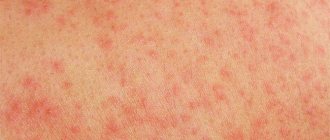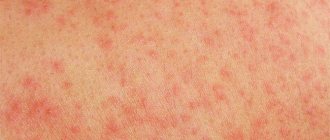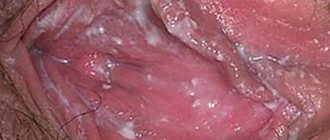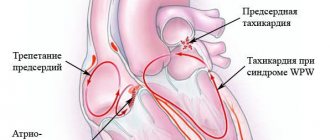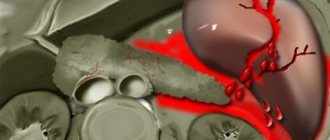Allergies in children are as common as colds. While many parents may find it intuitive to distinguish between runny nose symptoms and allergies, in some cases it can be quite challenging, especially if symptoms appear when plants are in bloom.
If persistent symptoms of a runny nose, cough, sneezing and itchy eyes persist for more than a week while pollen is flying, then an allergy is most likely to blame for your runny nose. But with one important caveat - if your child is an infant or a toddler under the age of three, then he is much less likely to have seasonal allergies. While there are exceptions to every rule, most children don't begin to experience hay fever symptoms until they are 3 or 4 years old, after they have been seasonally exposed to large amounts of pollen and have developed a sensitivity to the allergen. Interestingly, pollen allergies and food allergies are linked: more than half of children who suffer from hay fever also have food allergies.
How do allergies occur in children?
Allergy symptoms occur when a child's body overreacts with a protective immune response to normally harmless substances. Instead of not reacting to dandelion, an allergic child's body will quickly release a series of chemicals (including histamines) upon encountering the flower that cause itchy and red eyes, swollen mucous membranes, a runny nose and sometimes a cough. There is no clear, accurate way to tell at a glance whether your child has seasonal allergies when they start sneezing in the spring (or fall).
Acute allergic reactions in children
Parents also need to know the signs of serious conditions that occur as a result of allergies in a child: Quincke's edema, anaphylactic shock and bronchial asthma.
With Quincke's edema, swelling of the skin and mucous membranes suddenly develops. The most dangerous is swelling of the throat mucosa, which is manifested by difficulty breathing, hoarseness of the voice, a strong barking cough and clouding of consciousness (due to lack of oxygen). Anaphylactic shock can be identified by a drop in blood pressure, pale or bluish skin, bronchospasm, and loss of consciousness. Bronchial asthma is diagnosed based on the following symptoms: cough with difficult to separate sputum, whistling or wheezing when breathing, shortness of breath (predominantly exhalation is difficult), oxygen starvation of the body, attacks of suffocation.
What is hay fever and why does it occur?
Hay fever is the most common type of allergy and is an allergic reaction to pollen in the air and environment. Children with seasonal allergies exhibit symptoms at certain times of the year when certain allergy triggers (such as grass or tree pollen) are circulating. However, some children and adults may be allergic to more than one pollen or trigger, causing symptoms to appear at different times throughout the year. Most children with hay fever experience a noticeable change in symptoms around the same time each year, which is during the flowering season.
Seasonal allergies typically first appear after preschool age, although they can develop at any time during childhood, usually before age 10. Allergy symptoms typically change with age, peaking in your 20s, and then often disappear as you get older. Allergies are usually inherited. If one parent has allergies, there is a 25% chance that the child will also have allergies. And if a child is lucky enough to have both parents with allergies, the risk of developing allergies increases to more than 60%.
Treatment
When treating allergies in children, antihistamines, glucocorticosteroids, and probiotics can be used. However, the most effective treatment method is ASIT, which involves introducing microdoses of the allergen into the body.
This therapy can be started from 5 years of age. Treatment is long-term: the course is 3 years or more. ASIT is carried out year-round or at certain intervals. The treatment regimen is selected individually for each patient.
Only this type of treatment can prevent the development of polyvalent allergies. As a rule, allergies in young children are caused by a single causative allergen. In adolescence, polyvalent sensitization most often develops, when 2-3 or more causative allergens are identified. Therefore, it is important to start ASIT as early as possible.
How to treat seasonal allergies in children?
Over-the-counter antihistamines are most often used for allergy symptoms. Typical antihistamine active ingredients found in over-the-counter medications include diphenhydramine, loratadine, cetirizine, or chlorpheniramine. Most often, antihistamines that do not have a sedative effect are used for children - loratadine or cetirizine.
Over-the-counter allergy medications should only be used in children over 6 years of age. If your child is under 6 years of age and has allergy symptoms, talk to your pediatrician about prescribing the best medications available at the lowest appropriate dose.
Non-food allergies
So, we are very close to the appearance of allergic reactions in infants that are not related to food. In the vast majority of cases, their cause lies in heredity and constant contact with the allergen. Most often, the body's reaction can be caused by:
- dust and dust mites;
- animal hair;
- plant pollen;
- household chemicals;
- children's cosmetics.
To find out what exactly caused the allergic reaction, the doctor performs skin tests. To do this, apply one or another suspected allergen to the baby’s skin and monitor the reaction. If after a certain time the skin has not changed, they move on to the next possible “culprit”... and so on until the allergen is identified. After all this, the mother’s task is to find a way to isolate the baby from contact with the allergen and select the optimal medicinal support.
I would like to make a separate point about the baby’s allergic reaction to diapers. In this case, the rash consists of small dots with redness, itching, and swelling, which invariably raises a lot of questions for parents. The first step is to exclude diaper dermatitis, which manifests itself with rare diaper changes, and the factor of mechanical irritation (inconvenient Velcro and elastic bands). In other cases, allergies may occur due to:
- using cheap diapers made from low-quality materials or counterfeits;
- frequent changes of brands of diapers;
- additional components in the composition of diapers (chamomile, aloe).
Get rid of allergies, pick up a healing ointment and switch to Huggies - diapers with natural 100% cotton and hypoallergenic porous materials that allow your baby's skin to breathe.
What else do parents need to know?
One in five people suffers from allergies at some point in their lives. Hay fever is the most common type of allergy. It is easily treated by avoiding allergens, washing the child in the shower after returning from outside during flowering season, over-the-counter medications, and sometimes additional prescription medications. Most children with hay fever only need allergy medication during seasonal outbreaks.
Allergy symptoms often change with age. Allergy symptoms can worsen during early childhood and often disappear as people get older.
Drug labels list the ingredients of allergy medications. Use the lowest dose possible to treat symptoms, and check with your child's doctor if he is younger than 6 years old before giving him an over-the-counter antihistamine.
Symptoms and signs
Diagnosing and prescribing treatment for childhood allergies is often a real quest for specialists, because the manifestations of allergic diseases in children are diverse, and they often “hide” under other diseases or occur simultaneously with them. For example, diagnosing allergic enteropathy is difficult, since it is easily disguised as the manifestation of other diseases, for example, colic or dyspepsia. However, there are the most common manifestations of the disease, which make it possible to more accurately determine their cause.
For example, symptoms of rhinitis (nasal congestion, sneezing, runny nose) indicate a respiratory (respiratory) allergy in response to the entry of an allergen into the mucous membrane of the respiratory tract. In more severe cases, respiratory allergies are accompanied by a dry, obsessive cough, shortness of breath, and wheezing. And bronchial asthma becomes a kind of “peak”.1,3,4
Skin rashes on the cheeks, elbows and knees, behind the ears, around the eyes and wings of the nose, on the buttocks signal allergic dermatitis, which in children is often provoked by food, cold and drug allergies.1,4
If the child's eyelids are red, tears are flowing profusely (while he is in his usual mood), there is mucus in the corners of the eyes, and the eyes are itching - all this may be a consequence of allergic conjunctivitis.
But the most dangerous symptoms are anaphylactic shock, an immediate allergic reaction that requires urgent medical attention. These include pallor, sticky cold sweat, shortness of breath, spasms or twitching of certain parts of the body, involuntary urination and defecation, loss of consciousness, rare breathing, and a decrease in heart rate.1,4
Food allergies
Hives and facial swelling are the most common symptoms of food allergies. Hives appear as raised pink bumps with pale centers, similar to insect bites. Other symptoms include itching and swelling in the mouth, runny nose and cough, vomiting and diarrhea. Life-threatening allergic reactions may also include difficulty breathing and/or swallowing. The medical name for this phenomenon is anaphylaxis. Most of these reactions occur suddenly within 10-20 minutes. All this happens within 2 hours after eating a certain food containing allergens.
Allergy symptoms
The clinical picture of an allergic reaction directly depends on the type of pathology and the location of the pathological process.
Manifestations of skin allergies in a child include various types of rashes:
- redness of skin areas;
- the appearance of a rash;
- peeling of the skin;
- itching
This type of allergy is most common in infancy, but can persist into adulthood.
Manifestations of allergic rhinitis and hay fever:
- impaired nasal breathing, nasal congestion;
- watery nasal discharge;
- sneezing;
- itching in the nose area;
- lacrimation.
Manifestations of allergic conjunctivitis:
- swelling and redness of the eyelids;
- redness of the whites of the eyes;
- profuse lacrimation;
- a feeling of stinging in the eyes (or a feeling of “sand”);
- photophobia.
Main causes of food allergies
8 foods cause 9 out of 10 food allergies.
In the first year of a child's life: cow's milk, soy milk and egg.
Older children: peanuts, tree nuts, fish, seafood and wheat.
Seafood includes shrimp, crab, lobster, clams, oysters and scallops.
Tree nuts include all nuts (such as almonds and cashews) except peanuts. Peanuts and tree nuts are the most common triggers for severe reactions.
Of children with a proven food allergy, 40% have severe reactions. The remaining 60% have a mild reaction.
Still have questions?
Get an online consultation from leading allergists in St. Petersburg!
A professional and experienced pediatrician will answer your questions.
Medical care for a child without leaving home at a convenient time.
sign up for a consultation
A Skype consultation lasts 45 minutes.
Allergy prevention
The modern world is considered very allergenic.
Therefore, parents must adhere to a number of rules that can prevent the development of an inadequate response of the child’s immune system to external or internal environmental factors. This is especially true for children with a family history. Prevention measures are:
- long-term continuation of breastfeeding, refusal to use infant formula;
- correct introduction of complementary foods;
- refusal to consume products containing preservatives, dyes, flavors and other synthetic substitutes;
- eating simple natural foods (meat, seasonal vegetables and fruits, cereals), avoiding complex multi-ingredient foods (sausages, industrial sauces, cakes, etc.);
- use of hypoallergenic personal hygiene products.
Cross-reactions with other foods
Children with allergies to the following foods may react to other foods:
Cow's milk allergy: 90% also react to goat's milk and 40% to soy milk.
Egg: in 5% there is a reaction to chicken meat
Peanuts: In 5% of cases there is a reaction to other legumes (such as peas or beans). In 30% there is hypersensitivity to tree nuts.
Fish: in 10% a reaction to seafood is also observed.
Melon: 90% reacts to bananas and avocados
Ragweed pollen allergies can cause a cross-reaction with all melons, bananas and tomatoes.
Birch pollen allergies can cross-react with raw potatoes, carrots, celery and apples.
Grass pollen allergies may cross-react with tomatoes and kiwis.
Causes
Allergic rashes can occur in children from birth until the age of 7 years. This is explained by the fact that the immune system has not yet been formed. Below are the main causes of allergic reactions in children:
- Medicines, the body may react negatively to some components of medicines;
- Breast milk if the diet is not followed;
- Hygiene products and household chemicals;
- Plants and animals can also cause rashes;
- Ultra-violet rays;
- Various infections and diseases.
First aid and treatment
If children develop an allergic rash on their skin, it is strictly forbidden to squeeze pimples or open blisters. It is necessary to explain to the child that it is also forbidden to scratch the sores.
If he is still too small, make sure that he does not touch the wounds with dirty hands. He can get an infection, and this will only worsen his condition.
Treatment of rashes in children is selected depending on the type of disease. Parents who do not know how to treat allergic rashes in children should not select medications on their own.
"Sugar is not an allergen." Pediatrician - about food allergies, hay fever and atopic dermatitis
Is diathesis from sweets really a myth? Are there allergies to the weather? Is it even possible to outgrow this condition? These and other questions from parents are answered by pediatrician, allergist-immunologist, professor of the Department of Pediatrics and Children's Infectious Diseases at Sechenov University Daniil Munblit.
An allergy is a non-standard reaction to something very standard and common. To put it in a very exaggerated way, an allergy is always a reaction to protein. Our body does not react to an apple as an “apple” - it reacts to the specific protein that makes up this or that product.
Everything we eat and breathe consists of various proteins, that is, proteins. When we eat eggs, we get proteins that are part of the egg. These are the conditional “bricks” from which the egg is built. The same thing, for example, with pollen - an allergic reaction appears to its proteins.
We don't know why people with allergies develop allergic reactions to foods that others eat without any consequences. An allergy can occur to any product or substance that contains proteins, and during the life of any person.
How is an allergy different from a food intolerance?
It's a question of mechanism. The most traditional and classic type of food intolerance is lactase deficiency, when a person is unable to break down lactose, that is, milk sugar. Lactase, in turn, is an enzyme that allows lactose to be broken down. If there is not enough lactase in the body, manifestations from the gastrointestinal tract appear.
An allergic reaction is a response from our immune system. A person eats, for example, an egg, which contains protein, to which he has a classic allergic reaction of the immediate type. The human immune system, his “Ministry of Defense,” sees that the enemy has arrived. We have antigen presenting cells - they act as butlers. The system encounters an allergen, butler cells report: “The allergen has arrived!” And the body reacts immediately, because it is interested in instantly getting rid of the allergen protein. This immediate type reaction develops within seconds and minutes, less often - a couple of hours.
The most common symptoms of an allergic reaction:
- Edema
- Hives
- Itching
- Bronchoobstruction (narrowing of the airways)
- Cough
- Vomit
- Acute reactions from the gastrointestinal tract
Can allergies be outgrown?
Yes, children do often “outgrow” allergies to certain foods. This primarily applies to eggs and milk. In most cases, the allergy ends by the beginning of puberty, maximum by the time you enter university. Unfortunately, there are also foods to which people “outgrow” allergies much less often - these are, for example, nuts and peanuts. In 80-85% of cases, this allergy remains for the rest of life.
One of the signals that a child will “outgrow” an allergy is a different reaction to heat-labile and heat-stable proteins of the same product. The first ones are destroyed during heat treatment, the others are preserved. If a person reacts to a heat-labile protein, then he will neutrally tolerate the product after heat treatment.
Let’s say a child tolerates baked goods that contain an egg, and if he simply eats it, he gets an allergic reaction. This is a very good sign, which indicates that in the future this allergic person will be able to tolerate eggs in a less thermally processed form.
Can allergies arise from frequent consumption of the same foods? For example, if you eat eggs all week?
I can't really imagine such a situation. It happens that a person calmly eats a certain product all his life, and then one day he discovers an allergic reaction to it. But such an allergy will not go away instantly - once it appears, it will be with the person for a long time, and if we are talking about the occurrence of food allergies in an adult, then most likely until the end of life.
In adulthood, allergies to eggs or milk are extremely rare. Most often, adults are allergic to seafood, shrimp, nuts, and peanuts. But a situation where a person has allergies for a week and not for a week is impossible.
Are there allergies to the weather?
A reaction to the weather itself cannot be an allergic reaction. But there are natural phenomena that can contribute to the development of an allergic reaction, for example, thunderstorm asthma. People suffering from respiratory allergic diseases may experience its consequences when walking in a park or forest after a thunderstorm.
Natural conditions cause pollen clumps to absorb moisture and shrink, or when bombarded by heavy raindrops, they explode and become finely dispersed. This makes them easier to penetrate into the respiratory tract.
Also, after rain, mold actively grows, so people who are allergic to mold fungi (that is, the proteins that make up their composition) react and are forced to cope with the consequences of a weather phenomenon that is harmless to others.
What can be a food allergen?
Anything can be an allergen. Among the “children’s” allergens, the most common are: milk, egg, wheat, soy, peanuts, nuts, fish, seafood and, in recent years, kiwi and seeds. The prevalence of allergies to certain foods also varies somewhat depending on sociocultural characteristics and diet in different regions.
In Asia there is an exotic dish - bird's nest soup. They take birds' nests, boil them and eat them. In those Asian countries where this dish is common, there are people allergic to this soup.
What influences the development of allergies?
If the child's parents, mother or father, have allergic diseases, the risk of developing allergic diseases in the child increases sharply.
There is also the so-called “hygienic” hypothesis. She says that previously people encountered bacteria and viruses much more often, lived in direct contact with domestic animals, in very different conditions with an insufficient level of hygiene. Now in developed countries, on the contrary, it is popular to fight various infections - people treat everything around with antibacterial wipes and teach children to do this. Because of this, contact with bacteria and viruses is minimized, the load on the immune system is reduced - and allergic diseases appear more often.
Is it possible to be allergic to sugar?
There is no such thing as a sugar allergy because sugar is a carbohydrate, not a protein. Additionally, sugar has no effect on how the body responds to proteins.
The impossibility of an allergy to sugar does not mean that sweets cannot cause allergies at all. The reaction may appear to proteins of other products that are part of the dessert.
In addition, the child may develop what in Russia is usually called a pseudo-allergic reaction to dyes and preservatives that are included in the products. It can manifest itself in the form of itching and skin rashes.
Let's take jelly bears, which children love - they contain many dyes, which can cause a pseudo-allergic reaction. Of course, it is uncomfortable for the child, but it has nothing to do with allergies and does not lead to severe anaphylactic reactions that are life-threatening.
How to distinguish atopic dermatitis from food allergies?
The manifestations of various non-allergic reactions are often associated with allergies, but in fact they are only sometimes associated with it. For example, atopic dermatitis and food allergies are often equated. But in reality these are different diseases. I often hear the phrase from mothers: “It pours on everything.” If your child is rashing on everything, the rash is most likely not related to a food allergy.
Exacerbations of atopic dermatitis can occur from stress, temperature changes, hard water, and contact with certain types of synthetics or wool. There can be many reasons, so it is important to consult with a specialist rather than take tests yourself. Otherwise, you can simply waste money or, even worse, find diseases that the child does not have.
Atopic dermatitis remains - you need to look at the dynamics of each individual patient. However, if atopic dermatitis sharply worsens after eating specific foods, you should think about the possibility of a food allergy and consult a doctor. Often a child needs to be tested for food allergies when it comes to severe, intractable atopic dermatitis in young children. Other signs of a food allergy may include delays in physical development, especially if the child regularly experiences severe gastrointestinal symptoms.
How to deal with food allergies?
The most effective way is to eliminate the allergen from the diet. If you do not come into contact with the product, then there will be no reaction. You need to understand that you don’t need to exclude everything. If we are talking about an allergy to egg whites, you need to exclude eggs. But there is no need for a global diet.
And, of course, there is no need to remove red or orange foods, which parents very often do.
It must be remembered that the reaction does not occur to the product or its color, but to a specific protein that is part of the product
Sometimes a person can independently understand whether he has an allergic reaction by detecting hives and difficulty breathing after taking a certain product. But people tend to exaggerate: many find they have allergies that they actually don’t have. Allergic diseases should always be diagnosed by a doctor.
In addition, simply removing the product from your diet will not be enough. If we are talking about a milk allergy, a person will need to eliminate milk, fermented milk products, and the milk of other animals - in 90% of cases, a person with an allergy to cow's milk will be allergic to the milk of many other animals (for example, goat). The diet is also prescribed by an allergist. And if several foods are excluded at once, it is worth consulting with a nutritionist on how to properly build a diet taking into account the exclusion of several foods.
Call to all parents: |
| You should not make allergy treatment decisions on your own. Don't hesitate to contact specialists. This is not a question of conformity to the norm, but a question of help and support. Do not self-medicate - it leads to even greater problems, as we often see. In my practice, there was a child with bronchial asthma who received treatment with “inhalers” and everything was fine. But since the active ingredient in the inhaler was a hormonal drug, my mother, like many parents, was very frightened. At some point, she decided to treat her son with homeopathy. A week and a half later, he found himself in serious condition in the hospital in a state of suffocation, where they tried to pull him out of this state. Since then, my mother no longer went to homeopaths. So why start and put the child’s life at risk? |
How does allergies affect your life?
In the spring, allergic rhinitis worsens in children with allergies as a result of a reaction to flowering. They constantly sniffle and sniffle, sometimes becoming the target of bullying because of this. This affects the general physical and psychological condition of the child.
Allergic rhinitis - hay fever during the dusty season - makes it difficult for children to concentrate on anything other than allergy symptoms, which are poorly controlled by medications.
In the worst case scenario, the presence of an allergy can lead to the development of anaphylaxis, which can also develop in children with food allergies. It can be fatal, but fortunately this is extremely rare.
Just during the period of exacerbation of allergies, teenagers take exams for admission to university, not only in Russia, but also, for example, in the UK. There was a study that showed that children with symptoms of allergic rhinitis or children taking first-generation antihistamines, which cause drowsiness, performed worse on exams. As a result, the proposal to allocate a separate exam window for children with this disease was seriously discussed.
What determines the severity of an allergic reaction?
Predicting the severity of an allergic reaction is extremely difficult. The human immune system reacts not only to a specific protein, but also to a combination of different factors when consuming this protein.
The level of protein load that is part of the product also depends on the amount of allergen consumed. The difference between 2ml of milk and 200ml is huge - and the amount can affect the likelihood and severity of a reaction.
You also need to take into account the context of the situation. For example, an allergy sufferer drank milk before exercising. Active physical activity can cause a severe allergic reaction, including the development of anaphylaxis.
An example from the practice of a London professor I know: a teenage girl with a peanut allergy who was well aware of her reaction. She did everything right - she checked the ingredients, watched what she bought and consumed. One day, in a familiar candy bar, where there shouldn't be peanuts, there were peanuts. The girl spat out the piece, but already felt swelling developing. She forgot the syringe pen with adrenaline, which could have helped her in this situation, at home. She got scared and decided to run home to get a pen. The distance was about a 10 minute walk. As a result, she fell and died before reaching a few meters.
It is likely that if she had simply walked calmly or stayed where she was and called an ambulance, she would not have developed the anaphylactic reaction that ultimately killed her. Unfortunately, the combination of allergen consumption and physical activity resulted in death. This happens extremely rarely, but it happens nonetheless.
In reality, an anaphylactic reaction is rarely fatal. We cannot always say exactly why in some cases the attack ends in death and in others not. And, although this is due to the mentioned factors in the course of the reaction, it is not possible to predict its course, and therefore we simply advise you to avoid foods to which the patient is food allergic.
How to help an allergy sufferer
Of course, the provision of assistance depends on the age of the child. If we are talking about a small child, then parents should help him first of all. They should also be sure to notify school teachers and parents of friends in whose home the child may spend time about the risk of developing an anaphylactic reaction. To relieve symptoms from the respiratory system, bronchodilators are usually used, which is quite logical: during an attack, the lumen of the bronchi decreases, and it becomes difficult for the child to breathe. The same thing can happen with anaphylaxis.
In the West, many children suffering from allergic diseases always have a pen with adrenaline with them. Parents and medical staff of the educational institution where the child studies have the same ones. In Russia, syringe pens, unfortunately, are not registered, so you cannot buy them in a pharmacy. But you can order it on the Internet - at customs, most likely, a parcel with injectors will not be turned around, it is not a narcotic drug.
Unfortunately, it is impossible to find an adequate analogue of a syringe pen. The whole point of such a device is that a person can quickly inject adrenaline into his muscle. Someone carries an ampoule with adrenaline and a syringe separately, but the fact is that the person himself will not be able to quickly inject himself with this substance.
A study was conducted in which nurses, intensive care unit nurses, doctors and patients were asked to inject themselves with a certain dose of adrenaline under normal, non-stressful conditions. The only ones who coped more or less well were the intensive care nurses. And we were talking about normal, not stressful conditions.
When we talk about the fact that a person will administer adrenaline to himself without preparation and in a stressful situation, there is always a risk of administering the wrong dose of the drug. Especially if it's a child. However, people sometimes carry ampoules and syringes with them - this is better than nothing.
A home first aid kit for a child with allergies should include:
- Second generation antihistamines (eg, loratadine or cetirizine). They, unlike the first drugs, do not cause drowsiness.
- Bronchodilators (eg, Ventolin or salbutamol). If the child has asthma or has had cases of bronchial obstruction due to the consumption of certain foods. Such drugs expand the lumen of the bronchi, which narrows during an allergic reaction.
- Syringe pens with adrenaline. If a child is at high risk of anaphylaxis or has had a history of anaphylaxis, it is important to have a pen syringe not only in your home medicine cabinet, but also for both the child and the parent at all times.
If we send a child with friends and relatives for a walk or on a trip, we need to take medications from the home medicine cabinet with us. By the way, it’s more difficult with relatives here. Many mothers and fathers complain to me that grandparents do not believe in the child’s allergies: “Oh, you made it up!” But this goes away after they witness an acute allergic reaction.
The most interesting thing is that often other children, friends of a child with allergies, take his illness more seriously than adults
Although strangers may even offend the child because of his allergies, close friends understand what is at stake, worry, and learn to use a pen.
At the same time, their parents may be more frivolous. Therefore, it is important, when sending a child on a trip with other adults, to explain to them the principle of action of medications and the need for their use, and to explain what needs to be done in case of an unexpected reaction.
How to distinguish ARVI from allergies and prescribe treatment?
The symptoms of acute respiratory viral infections and allergies sometimes actually coincide, but they can be distinguished by the presence of temperature and the duration of the disease. Speaking very roughly, ARVI is an acute condition that is accompanied by a rise in temperature, but goes away after a week. Allergic diseases have been a concern for a long time. But to know for sure that the child does not have ARVI, but an allergic reaction, you need to go to the doctor. And it is the doctor who must tell whether we are talking about an allergic disease and prescribe the correct treatment.
A child is not allowed to go to school with an inhaler. What to do?
Unfortunately, if a child is not allowed to go to school with an inhaler, it is easier to change schools. In the West, many countries have “nut-free” schools: you are not allowed to bring nuts, they are not used anywhere, and they are not in the kitchen. There are also schools that do not allow you to bring latex products, for example there are no balloons there.
We have practically no such analogues, but the situation is gradually changing. Previously, parents of allergy sufferers reacted negatively: “What kind of nonsense are you talking about? Your child is just like everyone else.” This is now a rare response to warnings of possible allergic reactions, especially in private schools.
If we are talking about a secondary school where you are not allowed to carry an inhaler and from which you don’t want to leave, you need to get a doctor’s report about bronchial asthma and contact the school nurse with a request to store the inhaler. But this is generally an unlikely situation. The school, on the contrary, is interested in the child having an inhaler and being able to help himself.
What to do if a child begins to choke?
If the child begins to choke, you need to urgently call an ambulance. Speaking of emergency measures, it is worth immediately using a bronchodilator drug if we are talking about a child with bronchial asthma, or we know that he has a food allergy and accidentally ate an allergen.
It is difficult not to see that it is becoming difficult for a person to breathe. Shortness of breath occurs, wheezing can be heard, and the person often takes a forced position. In young children the reaction may be more noticeable. Their body turns on additional mechanisms to inhale as much air as possible, and additional muscles are used. You can see the retraction of the intercostal spaces, or supraclavicular fossae. This is called “recession of the pectoral compliance.”
Can allergy sufferers really benefit from a special conditioner?
Air conditioners with HEPA filters, which have a good degree of filtration of small particles, can make the life of an allergy sufferer easier to a certain extent. This is more relevant for children with allergies to house dust mites and pollen. In such situations, various devices with a HEPA filter - humidifiers, air conditioners - are relevant. However, they are often not enough to achieve control over the allergic disease.
Will moving help overcome allergies?
A person with allergies may benefit from traveling to another country during the flowering season. It helps people with allergic rhinitis. But for people with food allergies, moving will not help, since it always stays with them.
Can food allergies be cured? (Maybe)
Today, children suffering from food allergies can try to get rid of the disease not only by eliminating the product from the diet (in fact, in this case, the allergy remains but does not manifest itself), but also by special therapy.
Oral immunotherapy (also called desensitization and allergen-specific immunotherapy) is initiated only in a clinical setting and consists of giving a person a certain dose of the allergen daily. Gradually, his immune system learns to perceive it normally. The effectiveness of this therapy in patients with food allergies is still the subject of debate, but it is already being actively implemented in university clinics in the USA, Spain, Great Britain, Germany and other countries. In Russia, oral immunotherapy is currently unavailable.
There may be many explanations as to why this method is not so well developed in Russia. One possible reason, in my opinion, may be poor regulation of the judicial system in relation to doctors. Although Russian patients, like those in the West, sign a document stating that they are aware of the potential consequences, the doctor can still face criminal prosecution if the patient ends up in intensive care or dies.
As a result, doctors are afraid to even give a drug that is indicated for the patient, but is not prescribed in the recommendation documents, let alone a treatment method that could potentially lead to anaphylaxis. Perhaps this is why new treatment methods are introduced with great difficulty and fear.
A child wants to have a pet, but he is allergic. Is there a way out?
A pet allergy is truly an allergic reaction of the immune system that classically manifests itself as swelling, hives, itching, congestion, or nasal discharge. The reaction occurs to proteins found in animal hair, dander, urine or saliva.
One treatment option is allergen-specific immunotherapy, for example, for a cat or dog allergen.
In world practice, such immunotherapy is done either subcutaneously or sublingually. If carried out for 3-5 years, allergies to pet hair will significantly decrease.
In Russia, cat or dog allergens are not registered, so such treatment cannot be carried out in the country, and some parents take their children abroad to initiate it there, and then continue to take sublingual therapy upon returning to their homeland.
Another option currently being explored is vaccinating cats to reduce levels of a protein that people are most allergic to. There is also work to vaccinate people. Now such a remedy for relieving allergies to cats is being developed at Sechenov University.
Finally, there are cat foods that reduce the production of one of the proteins that many people are allergic to. But people react to different proteins and to different levels, so to prove the effectiveness of feeds, we need to collect an evidence base and do more high-quality research so that specific recommendations can be made.
Photo: Shutterstock/MiMaLeFi
Link to publication: mel.fm
How to diagnose allergies?
An allergic rash in children is often confused with an infectious one. If the treatment is incorrect, then the consequences of such a therapeutic course will not be the best. Before choosing an effective remedy, you need to learn to distinguish one disease from another. Only a doctor can make an accurate diagnosis, since a visual examination is not always enough to determine the cause of the disease; tests are required.
| Features | Allergic rash | Infection |
| General form | It can be in the form of both small dots and large blisters. In addition to them, there are often crusts, erosions and serous wells (ulcers from which fluid oozes). | The rashes are pinpoint and do not “merge” into a large spot. |
| Place of appearance | Face (forehead, cheeks, chin). Neck, arms, legs, buttocks. Rarely – stomach, back. | Belly, back. Rarely – arms, legs. Very rarely - forehead. |
| Heat | The temperature is rare, and if it rises, it is not higher than 37-38°C. | The disease is accompanied by fever, from 37°C to 41°C. |
| Itching | Happens. | Happens. |
| Swelling | Well visible. In some situations it is life-threatening. | They happen very rarely. |
| Associated symptoms | Lacrimation, conjunctivitis, hyperemia of the mucous membrane of the eye, decreased blood pressure, cough, upset stomach. | Running nose, general loss of strength, body aches. |
| How quickly it goes | Often the rash goes away immediately after taking the medicine. | Remains until the course of treatment is completed. |
